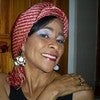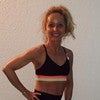Description
About This Video
Transcript
Read Full Transcript
Hi everyone. Welcome to [inaudible] anytime we're extremely happy that you're here with us and that you're deciding to learn about plots on online venue like this. Uh, what I'm here to talk about today are some probably about 10 of the top common cues you're going here when you're taking class mat class specifically. Uh, but this also translate to the equipment classes as well. Uh, in Palladio's it's being the mind, body physical movement practice. We do a lot of imagery with PyLadies. We do a lot of physical queuing, uh, with the imagery work. What we're really wanting to do is guide you to re kind of finding the physical sense of the action of the movement. Hope that doesn't sound too complicated.
I'm going to start with one very common cue that you're going to hear. And it's not all schools and not all teachers talk about this. It's specific to certain schools. But if something called the powerhouse, my belief of what the powerhouse is and what many believe that it is, it ranges in this part of your body. So it includes the abdominals, your back muscles, and the hip muscles is for power. It's for strength, it's for coordination, balance, control, and centering, which are all the principles of Claudia's as well. So, um, powerhouse, not all schools use it, but again, you're going to see specific teachers with certain lineages that do use that term. Uh, another one is called the box. And similarly the box is referencing the torso.
So you're going to think about your hip, your hip, your shoulder, and your shoulder. So it's more like a rectangle actually, but you can think of it as a box and what the box Q is good for. Uh, I'm going to show you something. So this might be a cue. If someone were to say to me, Amy, organize your box. They're seeing because one of my shoulders is not level with the other side. Or they may say, straighten out your shoulder box. Then I understand, oh, what their meaning for me to do is learn and feel better alignment across my shoulders. Similarly with the hips or something like this. So you're going to hear the box and it can be when you're lying on your back, your stomach, your side standing, uh, various places. All right, next one is navel to spine. This is a big one. We use this a lot.
What we mean with Navel to spine is I'm going to you to put your hand on your belly button. Everybody are, and you're watching, and not aggressively, but give a little inward tug of your belly button. Just kind of tug it in and do feel what happens around that area when you do that. So Navel to spine is really to our goal is that you feel your abdominal muscles contract. And why that's so important is it works in and against your spine for support. Uh, not all exercises need the same amount of naval the spine, but if you're new to pilates it and you've never used as part of your body before, it's a pretty quick way to awaken this part of your body and to use this as a source of strength. So you'll hear that quite often, navel to spine.
Make sure you when you're doing that, though. All right, next one is ribs in what do we mean when we say rib cage in? You're going to hear that a lot. Uh, I happen to be a person. It has a rib cage that is set more forward just by the way I was designed and really what ribs in what we, why we want to correct that or cue it is it's alignment. Again, ideally our rib cage should not set forward in front of our hipbones but rather be in line with the hipbones here. Uh, if my ribs are forward of my pelvis or my hips, it could actually shorten and um, overuse the back muscles and underuse the abdominal muscles and vice versa. If my ribs are back here, I might be under using my back muscles, overusing my abdominal muscles. So rib cage in, um, is, um, common. You're gonna hear that go ahead and lightly. If you're home and you're hearing that cue being given in class, maybe think about it little and do a little bit.
Cause sometimes you can overdo a cue and really pull the ribs in and that could start to develop some other things that we don't want you to do either. All right, another one, lift through the crown of your head. What do we mean? What do we mean when we say lifted to the crown of your head? We're talking about elongation from our feet usually, or even specifically tailbone up out the top of our head. And Pilati is one of our main things we're looking to do here is strengthen and lengthen. You're not gonna hear a cue. Shorten your spine.
We're not going to ask you to shorten ever. Posturely I would rather be upright, open any long gated. So we're promoting this term called axial elongation, and that's a pretty typical Q. You're going to hear elongate or lengthen or reach or energize out the top of your head. It feels good to another one in the upper body category. Our collarbones wide. You're going to hear that a lot. And again, posturally so I'm gonna turn a little bit to the side. If I see a student, maybe with this posture, I will cue them and it might be you at home, open your collarbones or feel your collarbones get wide. So we're looking to open the space from one side to the next for posture improvements.
You can see a pretty dramatic change if I'm here versus here. All right, so we're looking for that promotion of expansion and elongation and openness through the body. I'm going to move down on my body just a little bit to a pelvis and the pelvis. You're, you're gonna hear a few different things here about the pelvis. Probably the most common cue is neutral pelvis. Now if I were lying down, I'm not going to cause I can I show this standing just fine. Neutral pelvis.
We're really meaning, um, balanced pelvis. Think about this way. Go ahead and use this. Do this at home. You've got to hit bone, you've got to have bone and you've got a pubic bone. Neutral pelvis refers to the landmark, those three landmarks in front in equal to the back of your pelvis, behind you. So this not neutral pelvis, this not neutral pelvis. This more neutral pelvis and if you stand there maybe out of your chair at home or you're sitting down, try that. Getting those three landmarks organized and just see what you may feel around your abdomen in your low back. You may feel a part of their power house, you may feel part of the box kick in.
You actually might feel how you organize here helps you get up out of the crown of your head. It's amazing, so certain cues are going to reflect different parts of the body, but neutral pelvis is one you're going to hear a lot. It's a, it's a place we often start and we often finish and it can be, you're going to hear it neutral pelvis when you're lying on your side, on your belly, on your back, and again in standing, going onto some additional imagery cues, moving one pearl at a time or one bone at a time. We're, we often talk about that in a movement skill called articulation and is often done in supine or lying on your back where we start mobilizing the spine. We often begin at the tailbone and we'll say, move one bone at a time up off of the Mat until you arrive on your shoulder blades. So it's really trying to teach and introduce you to segmental motion of your spine, promoting mobility and strength in each and individual joint in your spine. Imagery your you could often hear is think of your spine, each vertebra like a Pearl, and move one pearl at a time. And some, some students resonate with imagery and some mou a resonate more with a firmer cue. So listen for that one. Uh, pull your zipper in or zip up your abdomen. That kinda goes back to navel to spine. So if you're standing there or watching, just imagine this for a second.
You're trying to fit into a pair of tight pants that has a zipper. Okay? Try to zip the zipper and it's a little tight. And again, you're probably going to feel this lower part of you do something so the muscles in your lower belly are probably gonna Kinda come together. So you'll hear zip it up or pull your zipper in. And one more. Q. I wanna talk about is a, some of the teachers on the site you use a lot is to to really reference movement of the pelvis. So coming out of neutral and beginning to learn how to move the pelvis is imagine your pelvis like a big bowl of soup that might work for some of you or a bowl of liquid or something like that. So if I relying on my back on the floor, um, again, I'm going to just stand here and do it.
It starts to insinuate invite you to a direction of how to move. So instead of the neutral, because you heard that one, to be able to move one part of the bowl forward or backward or possibly one bowl, one side of the bowl side up and down or side to side or maybe moving the whole bowl in a, uh, sometimes you'll hear this particular cue also as pelvic clock, 12 o'clock, three o'clock, six o'clock, nine o'clock. Again, the what we're cuing what we mean when we say that Q is teaching new direction of how to move your pelvis. Okay? A lot of information. If you have any questions about some of these basic cues, don't hesitate to like forum in and write into us and ask for more specificity. Each teacher has their own communication style. Each teacher has their own training background.
Certain schools use different cues than other schools and other teachers just create their own cues that aren't on this list. Um, we're here to make your movement practice positive, your [inaudible] journey, a very rich one. So we hope to hear from you. Thank you.
Begin Pilates: Tips for Success
Comments
You need to be a subscriber to post a comment.
Please Log In or Create an Account to start your free trial.























